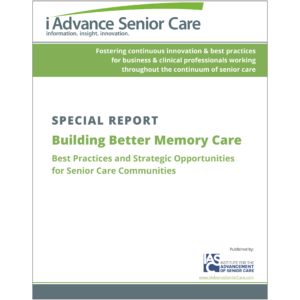Study: At CCRCs, CNA wages still dragging behind other caregivers
Long-term care facilities might need to re-examine the way certified nurse aides (CNAs) are valued.
Nursing care delivered by registered nurses (RNs) and licensed practicing nurses (LPNs) is still the most popular service offered at continuing care retirement communities (CCRCs) at 95.85 percent. It’s closely followed by CNAs at 94.89 percent, according to the 19th annual Continuing Care and Retirement Community Salary & Benefits Report for 2016-2017 published by Hospital & Healthcare Compensations Service (HCS).
The national average hourly rate for a lead CNA was $14.10 in 2016, a 6.47 percent decline from the 2015 rate of $15.08, the biggest year-over-year decline among hourly workers. Most other CNAs earned $13.03 per hour, a 1 percent increase from the 2015 rate of $12.90. Non-certified nurse aides earned $11 per hour, a 1.81 percent decrease from $11.20 in 2015, the fourth-biggest year-over-year decline among hourly workers.
CNAs earned less than half of what other nursing positions earned per hour on average in 2016, with staff nurses (RNs) making $28.85 an hour, charge staff nurses (RN) making $29.75 an hour, practical nurses (LPNs) making $22.69 an hour and charge nurses making $24.17 an hour.
CNAs continued to have the second-highest annual turnover rate though it decreased slightly to 36.87 in 2016-2017 from 38.20 in 2015-2016.
An overwhelming majority of respondents reported the facility does not pay the cost of certification for nurse aides (244 to 39). But many facilities (43 percent) pay a premium for already-certified nurse aides compared to 56 percent that don’t.
HCS conducted and published the report with compensation data on about 87,000 employees in 46 management and 53 nonmanagement positions at 536 CCRCs nationwide. The report is published in cooperation with LeadingAge.

Nicole was Senior Editor at I Advance Senior Care and Long Term Living Magazine 2015-2017. She has a Journalism degree from Kent State University and is finalizing a master’s degree in Information Architecture and Management. She has extensive studies in the digital user experience and in branding online media. She has worked as an editor and writer for various B2B publications, including Business Finance.
Related Articles
Topics: Facility management , Staffing











